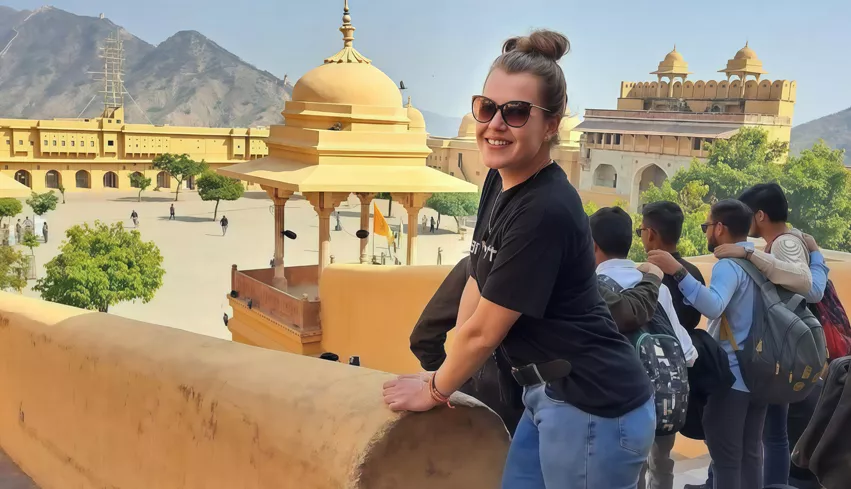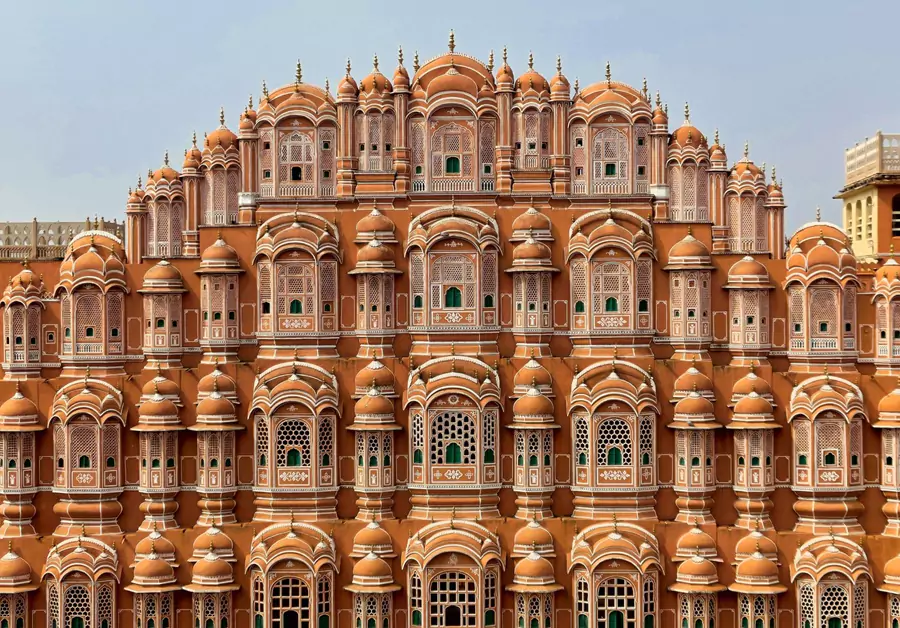Jaipur Travel Guide 2025 – First-Time Traveller
Jaipur, the Pink City of India, is famous for its majestic forts, royal palaces, bustling bazaars, and rich cultural heritage. This guide takes you on a complete Jaipur Tour — exploring iconic landmarks, hidden gems, local markets, and experiences that make Jaipur a must-visit destination in 2025.
1. Introduction to Jaipur
Jaipur reflects the grandeur of Rajasthani history — its royal palaces, colorful markets, and cultural festivals bring the city to life. Known as the Pink City, Jaipur’s streets are filled with stories of kings, artisans, and timeless traditions. A Jaipur tour blends sightseeing, cultural exploration, and unforgettable experiences.
Let’s begin our journey through Jaipur’s top attractions, historical sites, and must-visit experiences.
2. Iconic Attractions
Jaipur is a treasure trove of architectural marvels, royal palaces, and historic landmarks that tell the story of its regal past. Every monument reflects the city’s unique blend of Rajputana grandeur and Mughal influences, offering visitors a window into centuries of history, culture, and artistry. From hilltop forts to pink-hued palaces, Jaipur’s attractions are not just visually stunning but also steeped in fascinating tales of kings, battles, and royal traditions.
Amber Fort
Perched atop a scenic hill overlooking Maota Lake, Amber Fort is one of Jaipur’s most iconic landmarks. Constructed in the 16th century by Raja Man Singh I, this hill fort features a stunning mix of Hindu and Mughal architecture with intricate carvings, ornate mirror work, and grand courtyards. Visitors can enjoy elephant rides up the hill, explore the Sheesh Mahal (Mirror Palace), and witness the light-and-sound show that narrates the fort’s rich history after sunset. The panoramic views of the surrounding Aravalli hills and lake add to the fort’s charm, making it a must-visit destination for history and photography enthusiasts alike.
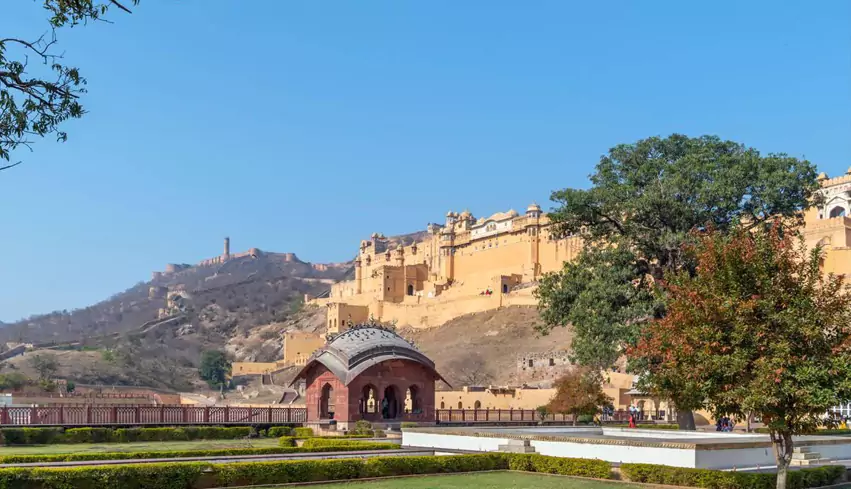
City Palace
Located in the heart of Jaipur, the City Palace is a magnificent blend of Rajasthani and Mughal architectural styles. This royal residence of Jaipur’s Maharajas houses beautiful courtyards, gardens, and museums, including the Chandra Mahal and Mubarak Mahal. Visitors can explore the royal artifacts, traditional attire, armory, and manuscripts that showcase Jaipur’s regal heritage. The City Palace is not just a historical monument but also an active royal residence, allowing a glimpse into the lifestyle of Jaipur’s royal family. Photography lovers will enjoy capturing the palace’s ornate balconies, frescoes, and intricate latticework.
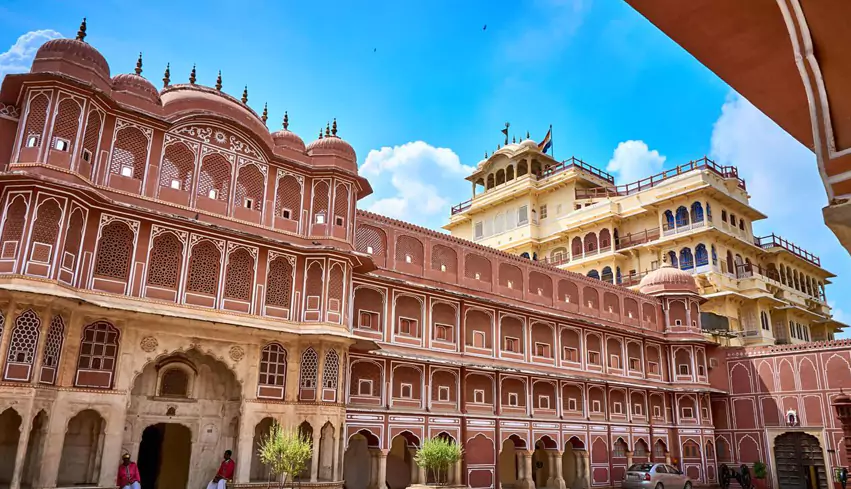
Hawa Mahal
Known as the Palace of Winds, Hawa Mahal is one of Jaipur’s most recognizable landmarks. Built in 1799 by Maharaja Sawai Pratap Singh, this five-story pink sandstone marvel features 953 small windows called ‘jharokhas,’ allowing royal ladies to observe street festivals and daily life without being seen. The unique lattice design also provides natural air cooling, making it a comfortable retreat in Jaipur’s heat. Hawa Mahal is a photographer’s delight, especially during sunrise or sunset when the pink facade glows brilliantly. Visitors can climb to the top and enjoy panoramic views of the bustling streets below.
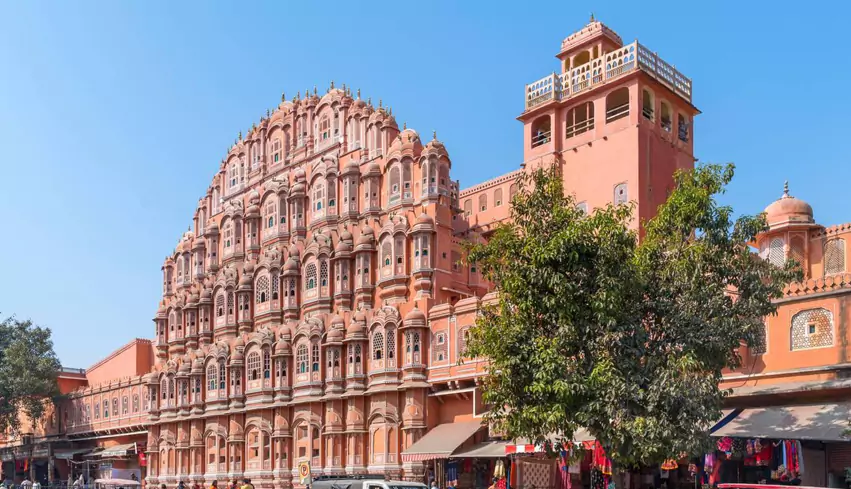
Jantar Mantar
Jantar Mantar, built by Maharaja Sawai Jai Singh II in the early 18th century, is an astronomical observatory and a UNESCO World Heritage site. It houses the world’s largest stone sundial along with a collection of unique instruments designed for measuring time, tracking celestial bodies, and predicting eclipses. This scientific marvel demonstrates the advanced knowledge of astronomy in ancient India. Visitors can marvel at the precision of the massive instruments and enjoy guided tours that explain their purpose and historical significance. Jantar Mantar is not only an architectural wonder but also a fascinating glimpse into Jaipur’s intellectual and cultural achievements.
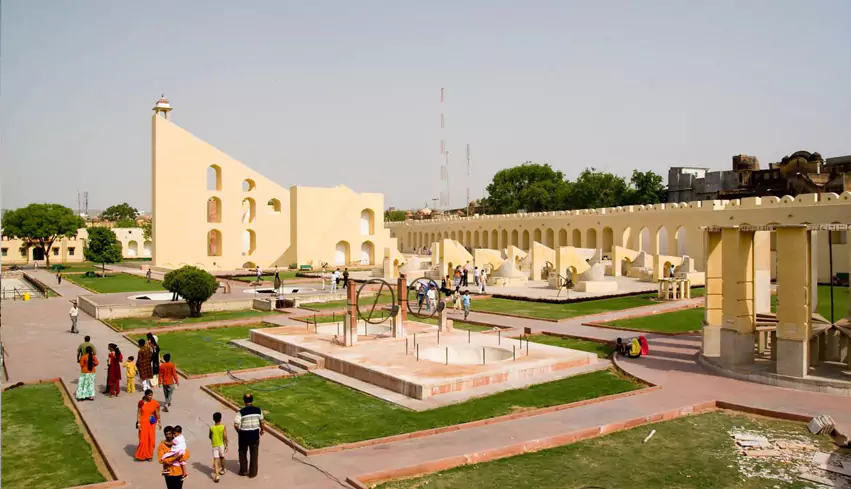
Jal Mahal
Jal Mahal, or the “Water Palace,” is a stunning palace situated in the middle of Man Sagar Lake. Built in the 18th century by Maharaja Madho Singh I, its architectural beauty combines Mughal and Rajput styles. Although the palace itself is not open for full interior tours, its reflection on the calm lake waters creates a magical sight, especially during sunrise and sunset. Visitors can enjoy boat rides nearby, photograph the palace against the Aravalli hills, and stroll along the lake’s promenade. Jal Mahal is particularly famous for its serene ambiance and romantic setting, making it a must-see Jaipur landmark.
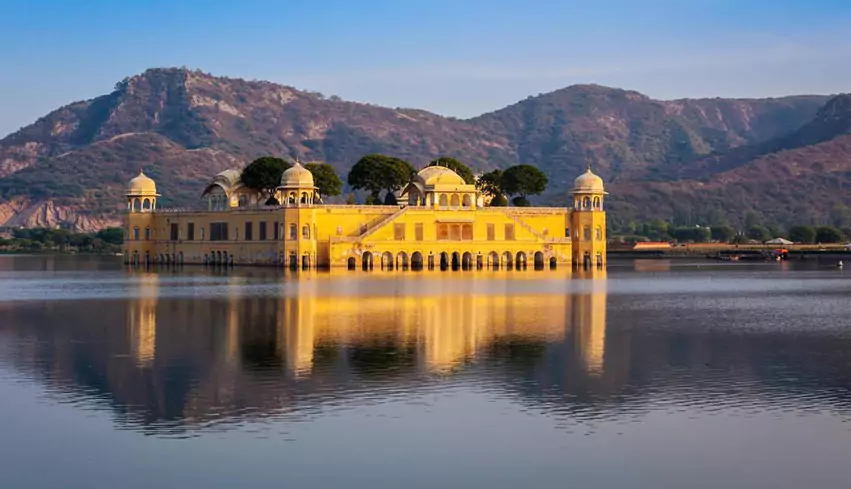
3. Famous Markets and Shopping Streets
Jaipur is a shopper’s paradise, offering an enchanting blend of traditional Rajasthani handicrafts, vibrant textiles, exquisite jewelry, and modern boutiques. The city’s bustling markets are more than just shopping destinations — they are a cultural experience, where visitors can witness skilled artisans at work, smell the aroma of spices, hear the lively chatter of locals, and immerse themselves in Jaipur’s colorful lifestyle. From centuries-old bazaars selling royal artifacts to contemporary streets lined with trendy shops, Jaipur’s markets cater to every type of shopper and provide a memorable glimpse into the city’s heritage.
Johari Bazaar
One of Jaipur’s most iconic markets, Johari Bazaar is renowned for its stunning jewelry and gemstones. Dating back to the 18th century, this market was originally established to serve the royal families, offering precious jewels, intricately designed gold and silver ornaments, and traditional Kundan and Meenakari work. Today, Johari Bazaar continues to attract tourists and locals alike with its array of colorful bangles, elegant necklaces, rings, and earrings. Beyond jewelry, the market also features traditional Rajasthani crafts such as embroidered textiles, miniature paintings, and handcrafted decorative items. Walking through Johari Bazaar is like stepping back in time — every shop has a story, and haggling with friendly shopkeepers is part of the authentic experience.
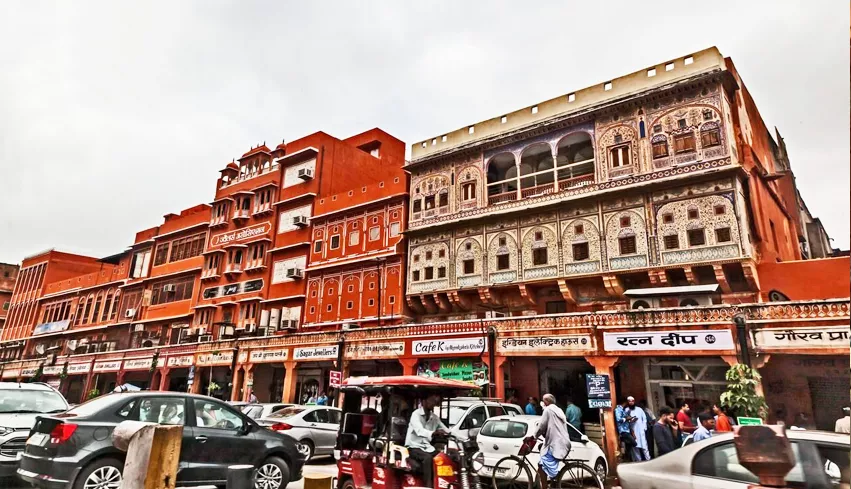
Bapu Bazaar & Tripolia Bazaar
Bapu Bazaar and Tripolia Bazaar are two of Jaipur’s most popular shopping streets, each offering a unique mix of traditional and contemporary products. Bapu Bazaar is famous for its vibrant textiles, handcrafted leather goods, mojris (traditional Rajasthani shoes), and colorful scarves and dupattas. Visitors can find everything from home décor items to modern clothing fused with ethnic designs, making it a perfect destination for both souvenirs and everyday shopping. Tripolia Bazaar, on the other hand, specializes in brassware, copper utensils, decorative items, and antique artifacts. It is a bustling hub where locals and tourists mingle, enjoy street food, and explore shops that have been operating for generations. Both markets are ideal for exploring Jaipur’s local craftsmanship, experiencing the city’s energetic street culture, and discovering unique items that reflect Rajasthan’s artistic legacy.
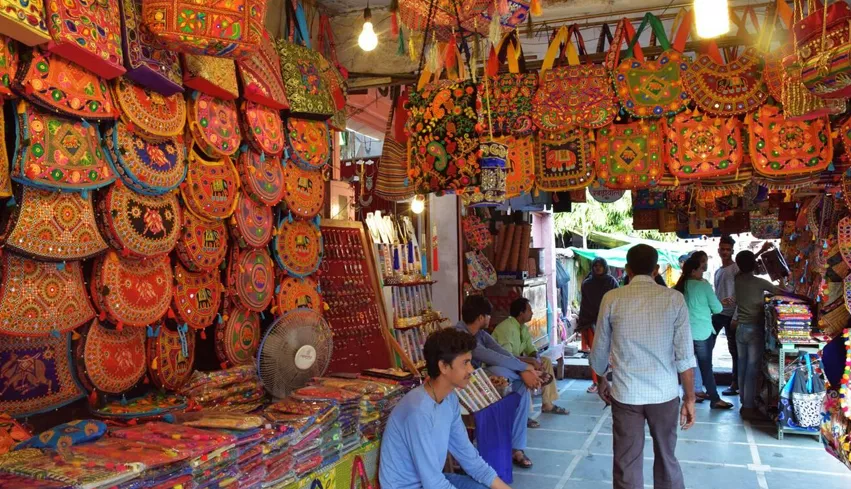
Other Notable Markets
In addition to the main bazaars, Jaipur is home to several other markets worth exploring. Chandpole Bazaar is known for textiles, bedspreads, and traditional clothing, while Nehru Bazaar offers a mix of casual wear, accessories, and handcrafted goods. For those interested in antiques and collectibles, M.I. Road hosts shops that sell vintage items, traditional paintings, and heritage artifacts. These markets not only provide excellent shopping opportunities but also allow visitors to witness Jaipur’s vibrant street life, interact with local artisans, and enjoy the colorful atmosphere that makes every visit memorable.
Tips for Shopping in Jaipur
- Always be prepared to bargain; it’s part of the shopping culture in Jaipur.
- Look for authentic handicrafts and certified jewelry to ensure quality.
- Carry cash, as smaller shops may not accept cards.
- Visit early in the morning or late afternoon to avoid peak crowds and enjoy a more relaxed experience.
- Take your time exploring alleyways and smaller shops — they often hide unique treasures and handmade items.
4. Cultural and Heritage Experiences
Jaipur is not just about forts, palaces, and markets — it is a city where culture, tradition, and heritage come alive through immersive experiences. From village-style resorts to vibrant festivals and unique activities, visitors can dive deep into Rajasthani lifestyle, art, and entertainment. These cultural experiences allow travelers to witness the rich history and warm hospitality of the Pink City, making their visit memorable beyond sightseeing.
Chokhi Dhani
Chokhi Dhani is a quintessential Rajasthani village resort that recreates the traditional life and culture of Rajasthan. Spread over acres of land on the outskirts of Jaipur, it offers visitors a unique opportunity to experience folk dances, puppet shows, music performances, and cultural rituals in a lively, authentic setting. Guests can enjoy camel rides, bullock cart rides, and even try their hand at traditional crafts. The highlight of Chokhi Dhani is its food — authentic Rajasthani thalis, snacks, and sweets served in traditional style. Visiting Chokhi Dhani is not only entertaining but also educational, as it gives insight into the customs, traditions, and lifestyle of rural Rajasthan.
Light & Sound Shows
The forts and palaces of Jaipur come alive at night with spectacular Light & Sound Shows. Amber Fort and City Palace host shows that narrate the history of Jaipur’s royal families, legendary battles, and architectural marvels through dramatic lighting, music, and storytelling. These shows are perfect for visitors who want to experience the grandeur of Jaipur’s history in a visually engaging way. The combination of illuminated palaces, background scores, and narrations provides an immersive journey into the city’s regal past, making it an unforgettable evening experience.
Hot Air Balloon Rides
For a truly unique perspective of Jaipur, hot air balloon rides offer breathtaking views of the city’s forts, palaces, and scenic landscapes from above. Typically conducted during sunrise, these rides provide panoramic views of the Aravalli hills, Jal Mahal, Amber Fort, and surrounding countryside. The gentle drift over Jaipur allows photographers and nature lovers to capture stunning aerial shots while enjoying the serene experience of floating above the Pink City. Hot air balloon rides are ideal for couples, families, and solo travelers seeking adventure, romance, or a fresh perspective on Jaipur’s iconic landmarks.
Other Cultural Experiences
Beyond these major attractions, Jaipur offers a variety of cultural experiences that enrich a visitor’s understanding of the city. Tourists can attend Rajasthani folk music concerts, explore miniature painting workshops, witness traditional pottery demonstrations, or participate in local festivals such as Teej and Gangaur. Many heritage hotels and palaces offer cultural evenings with live performances, classical music, and traditional cuisine, allowing visitors to dine like royalty while enjoying authentic entertainment. Exploring Jaipur’s cultural side gives travelers a deeper connection to the city’s history, traditions, and vibrant lifestyle.
Tips for Enjoying Cultural Experiences
- Check schedules in advance for Light & Sound Shows and cultural performances.
- Wear comfortable clothing and shoes for activities like camel rides or village walks.
- Book hot air balloon rides early to secure the best sunrise slots.
- Carry a camera or smartphone to capture performances, but be respectful of performers’ space.
- Try traditional food and beverages offered at cultural venues to complete the immersive experience.
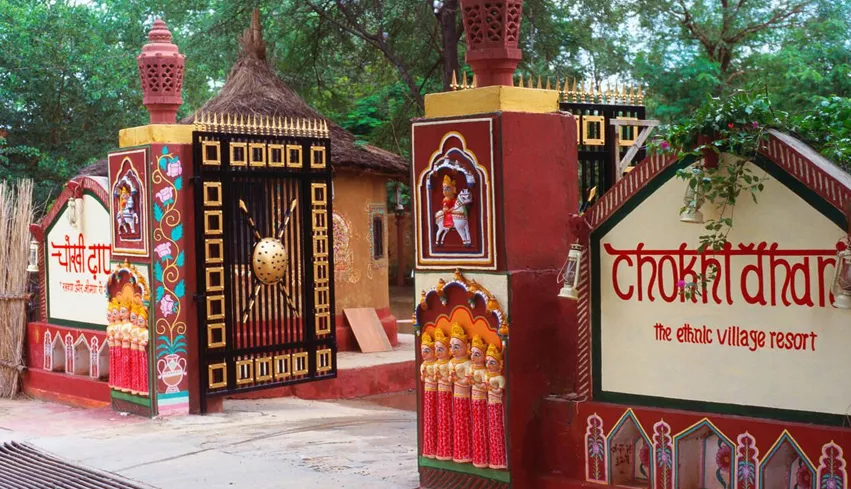
10. How to Reach Jaipur: Flights, Trains, Buses, and Taxis
Jaipur, the Pink City, is well-connected to major cities across India by air, rail, and road. Travelers have multiple options to reach Jaipur depending on their budget, convenience, and time. Here’s a detailed guide for each mode of transport:
By Air
Jaipur International Airport (JAI) is the main airport serving the city, located about 13 km from the city center. It is connected to major Indian cities such as Delhi, Mumbai, Bengaluru, Chennai, Kolkata, and Hyderabad through regular domestic flights. International flights are available from select countries. From the airport, taxis, app-based cabs (Ola, Uber), and airport shuttles can take you to hotels and tourist spots. Booking flights in advance often provides the best fares, especially during peak tourist season (October to March).
By Train
Jaipur Railway Station is a major hub on the Indian Railways network. It is well-connected to cities like Delhi, Agra, Mumbai, Udaipur, and Jodhpur through both regular and express trains. Trains are a convenient and budget-friendly option for travelers, and AC and non-AC coaches are available for comfort. For a more scenic and leisurely experience, luxury tourist trains also operate on certain routes. Booking tickets online in advance is recommended, especially during festivals and holiday seasons.
By Bus
Jaipur has an extensive bus network operated by Rajasthan State Road Transport Corporation (RSRTC) as well as private operators. Buses connect Jaipur with nearby cities and towns like Ajmer, Pushkar, Jodhpur, and Delhi. Options range from standard non-AC buses to luxury and Volvo coaches. City buses are available for local travel within Jaipur, though they can get crowded during peak hours. Long-distance buses are a comfortable and economical option for travelers who prefer road travel.
By Taxi and Auto-Rickshaw
Taxis and auto-rickshaws are widely available for local travel and sightseeing in Jaipur. For short distances, auto-rickshaws are economical, while taxis are more comfortable for full-day city tours or airport transfers. Ride-hailing apps like Ola and Uber operate extensively in Jaipur, offering convenience, fixed fares, and cashless payments. For travelers visiting multiple attractions in one day, hiring a taxi for a half-day or full-day tour is a popular choice.
Tips for Traveling to Jaipur
- Book flights, trains, and long-distance buses in advance during peak season (October to March).
- Use ride-hailing apps or pre-booked taxis for safer and hassle-free local travel.
- Carry a map or use navigation apps for local sightseeing and traffic updates.
- Travel light if using buses or trains, as luggage space can be limited on some vehicles.
- Combine transport modes—for example, fly into Jaipur and use taxis or buses for local exploration—for convenience and flexibility.
5. Best Time and Travel Tips for Jaipur Tour
- Visit between October and March for pleasant weather.
- Wear comfortable shoes for walking in forts and markets.
- Hire a local guide for historical insights and hidden spots.
- Plan early morning visits to popular attractions to avoid crowds.
- Carry water, sunscreen, and a camera for photography.
6. Conclusion
Jaipur is more than just a city of palaces; it’s a cultural hub full of history, colors, and unforgettable experiences. From heritage forts to lively markets, every corner tells a story. Explore Jaipur in 2025, and let the Pink City leave you with memories that last a lifetime.

